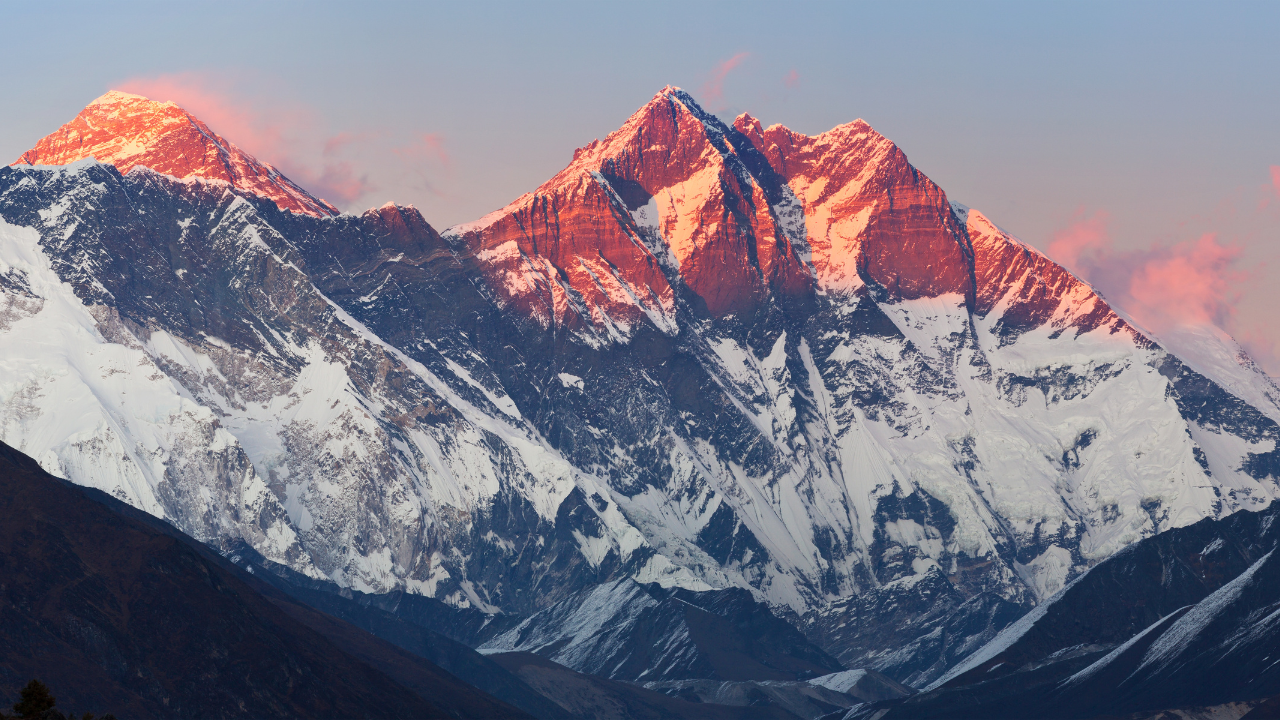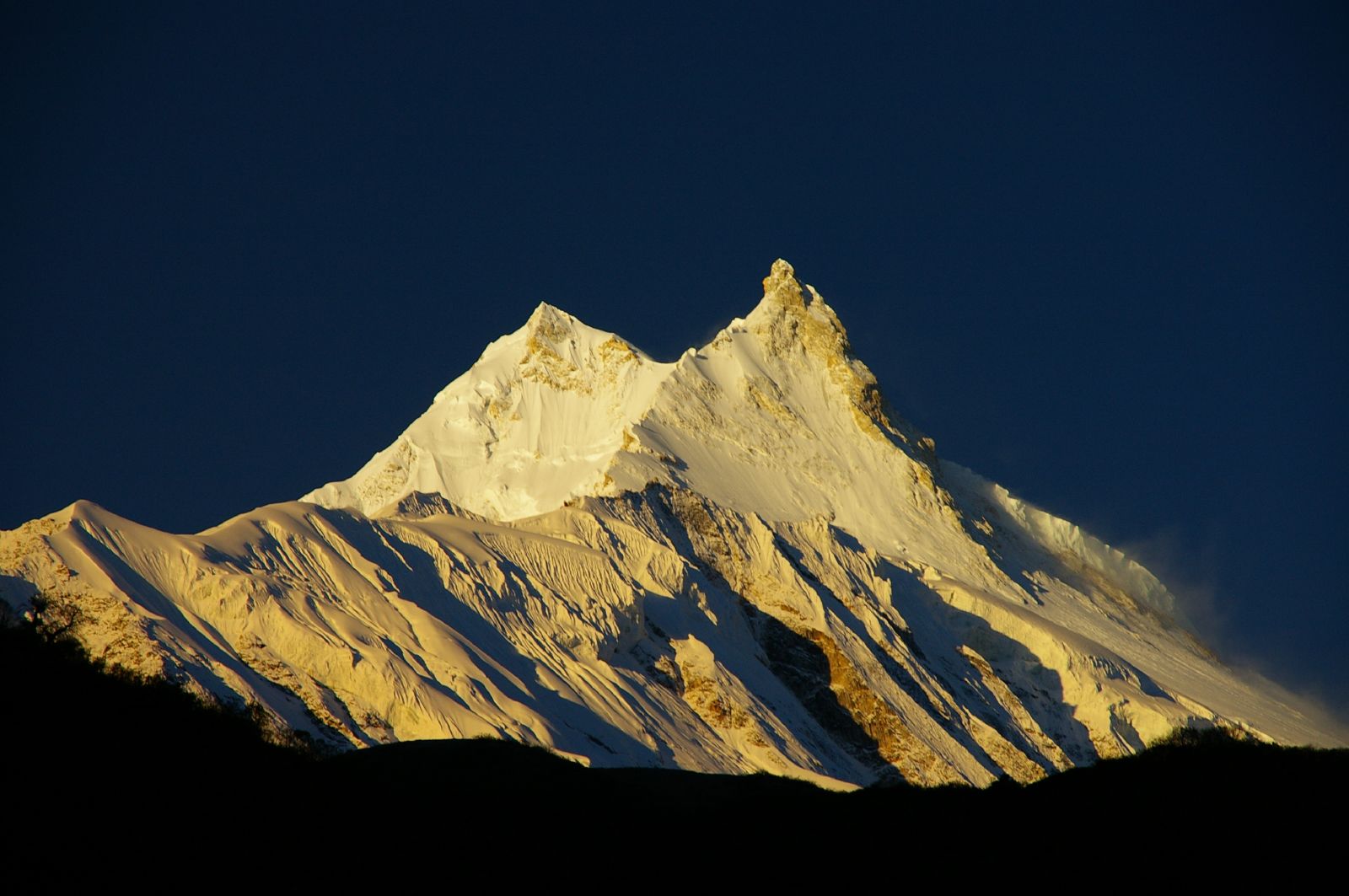The eight-thousanders are the 14 mountains recognised by the International Mountaineering and Climbing Federation (UIAA) as being more than 8,000 metres (26,247 ft) in height above sea level, and sufficiently independent of neighbouring peaks. There has no precise definition of the criteria used to assess independence, and at times, the UIAA has considered whether the list should be expanded to 20 mountain peaks by including the major satellite peaks of eight-thousanders. All of the eight-thousanders are located in the Himalayan and Karakoram mountain ranges in Asia, and their summits lie in an altitude known as the death zone. From 1950 to 1964, all 14 eight-thousanders had summited in the summer (the first to…
The eight-thousanders are the 14 mountains recognised by the International Mountaineering and Climbing Federation (UIAA) as being more than 8,000 metres (26,247 ft) in height above sea level, and sufficiently independent of neighbouring peaks. There has no precise definition of the criteria used to assess independence, and at times, the UIAA has considered whether the list should be expanded to 20 mountain peaks by including the major satellite peaks of eight-thousanders. All of the eight-thousanders are located in the Himalayan and Karakoram mountain ranges in Asia, and their summits lie in an altitude known as the death zone.
From 1950 to 1964, all 14 eight-thousanders had summited in the summer (the first to be summited was Annapurna I in 1950, and the last was Shishapangma in 1964), and from 1980 to 2021, all 14 were summited in the winter (the first to be summited in winter being Mount Everest in 1980, and the last being K2 in 2021). On a variety of statistical techniques, the deadliest eight-thousander is Annapurna I (one death – climber or climber support – for every three summiters), followed by K2 and Nanga Parbat (one death for every four to five summiters), and then Dhaulagiri and Kangchenjunga (one for every six to seven summiters).
The first person to summit all 14 eight-thousanders was the Italian climber Reinhold Messner in 1986, who did not use any supplementary oxygen. In 2010, Edurne Pasaban, a Basque Spanish mountaineer became the first woman to summit all 14 eight-thousanders, but with the aid of supplementary oxygen. In 2011, Austrian Gerlinde Kaltenbrunner became the first woman to summit all 14 eight-thousanders without the aid of supplementary oxygen. In 2013, South Korean Kim Chang-ho climbed all 14 eight-thousanders in 7 years and 310 days, without the aid of supplementary oxygen. In 2019, British-Nepalese climber Nirmal Purja, climbed all 14 eight-thousanders in 6 months and 6 days, with supplementary oxygen. In July 2022, Sanu Sherpa became the first person to summit all 14 eight-thousanders twice, which he did from 2006 to 2022.
Issues with false summits (e.g. Cho Oyu, Annapurna I and Dhaulagiri), or separated dual summits (e.g. Shishapangma and Manaslu), have led to disputed claims of ascents.[1] In 2022, after several years of research, a team of experts reported that they could only confirm evidence that three climbers, Ed Viesturs, Veikka Gustafsson and Nirmal Purja, had stood on the true geographic summit of all 14 eight-thousanders
First ascents[edit]

The first recorded attempt on an eight-thousander was when Albert F. Mummery, Geoffrey Hastings and J. Norman Collie tried to climb Pakistan’s Nanga Parbat in 1895. The attempt failed when Mummery and two Gurkhas, Ragobir Thapa and Goman Singh, were killed by an avalanche.[3]
The first recorded successful ascent of an eight-thousander was by the French Maurice Herzog and Louis Lachenal, who reached the summit of Annapurna on 3 June 1950 during the 1950 French Annapurna expedition.[4] Due to its location in Tibet, Shishapangma was the last eight-thousander to be ascended, which was completed by a Chinese team led by Xu Jing in 1964 (Tibet’s mountains were closed by China to foreigners until 1978).[5]
The first winter ascent of an eight-thousander was by a Polish team led by Andrzej Zawada on Mount Everest, with Leszek Cichy and Krzysztof Wielicki reaching the summit on 17 February 1980;[6] all-Polish teams would complete nine of the first fourteen winter ascents of eight-thousanders.[7] The final eight-thousander to be climbed in winter was K2, whose summit was ascended by a 10-person Nepalese team on 16 January 2021.[8]
Only two climbers have completed more than one first ascent of an eight-thousander, Hermann Buhl (Nanga Parbat and Broad Peak) and Kurt Diemberger (Broad Peak and Dhaulagiri). Buhl’s summit of Nanga Parbat in 1953 is notable as being the only solo first ascent of one of the eight-thousanders. The Polish climber Jerzy Kukuczka is noted for creating over ten new routes on various eight-thousander mountains.[7] Italian climber Simone Moro made the first winter ascent of four eight-thousanders (Shishapangma, Makalu, Gasherbrum II, and Nanga Parbat),[9] while three Polish climbers have each made three first winter ascents of an eight-thousander, Maciej Berbeka (Cho Oyu, Manaslu, and Broad Peak), Krzysztof Wielicki (Everest, Kangchenjunga, and Lhotse) and Jerzy Kukuczka (Dhaulagiri I, Kangchenjunga, and Annapurna I).

Broad Peak Expedition

Lhotse Expedition 8516M

Gasherbrum II Expedition

Nanga Parbat Expedition 2023

Mount K2 Expedition

Everest Expedition (North Face)

Annapurna IV Mountain

Mount Shishapangma

VVIP EVEREST EXPEDITION 2024






